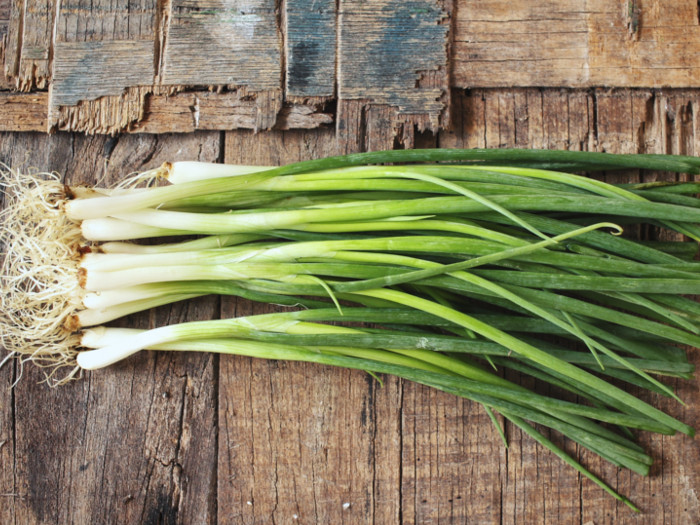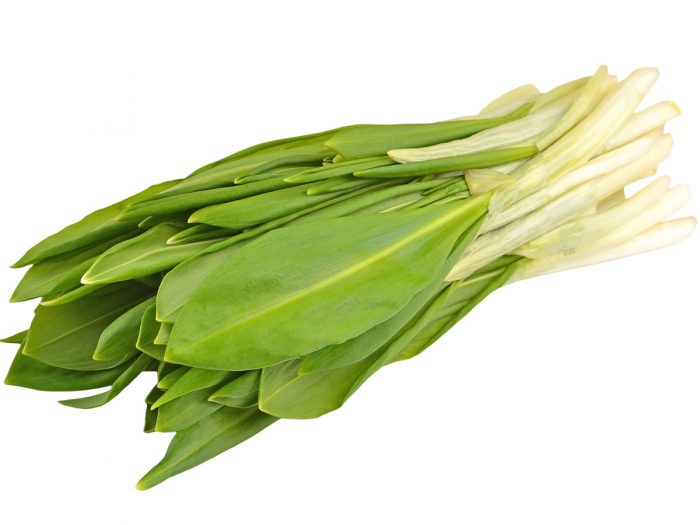Green onions are often preferred over regular onions because of their milder flavor. But what do you do when you don’t have any at hand? Fortunately, green onion substitutes can be quite easy to find, particularly among plants and herbs that are closely related. Knowing the best green onion substitutes will ensure that your dish never lacks that special hint of flavor.
Green Onion Substitutes
Green onions are young onion shoots that have small green stalks and small bulbs. They are milder than fully matured onions and are can be used as a raw topping on salads and dips. Green onions also add a refreshing crunch and color to entrees, casseroles, and soups.

Green onion might be an excellent source of Sulphur which is beneficial for overall health. Photo Credit: Shutterstock
Green onions can be found in most grocery store produce sections. Sometimes you can find them labeled under scallions or spring onions. However, if your favorite grocer happens to be out, there are a few substitutions like chives, leeks, ramps, shallots, and onions that can save your dish.
Chives
For garnishes and raw dishes, you can use fresh chives to substitute for green onions. Chives are thin and small like green onions but without the white bulb section. They are not quite as crunchy as green onions, but the taste is extremely similar.
To use: Use fresh chives and not dried ones as they might be closer to onions in flavor. To use, just snipe the chives and add them to the recipe. These should not be cooked for a long period. It is best to use them towards the end of the cooking time or to top soups and stews. [1]
Leeks
Leeks look very similar to green onions, but the stalks are much wider and leaf-like. However, they can taste similar to full-strength onions and might overpower a recipe if you use too much. They are a good substitute only if you are using them in a cooked dish, where the flavors will be able to mellow and the stalks will soften.
To use: Trim the leeks by removing the tough base and the rougher upper green tops. Cut the leeks lengthwise and wash under running water. This will remove the dirt and grit that is often present between the layers. It is usually chopped and added at the beginning like onions.
Ramps
Ramps are wild leeks that can be foraged in the spring. They can grow wild throughout Europe, Asia, Canada, and the Eastern United States, and many people consider the first ramps of the season to be a delicacy. Ramps have a very strong flavor of not only onion but also garlic. [2]
To use: As ramps are strong, they should be used sparingly and to taste. They are not appropriate as a garnish but can work well in a cooked recipe or sauce. They are prepared much like leeks. Their taste can be enhanced by vinegar. So, they are also perfect for pickling.

A bunch of wild leeks Photo Credit: Shutterstock
Shallots
Shallots are smaller onions that have a milder, sweeter flavor. When being used in place of green onions, a small amount of minced shallot will not overwhelm the recipe. They can be used as substitutes in cooked dishes. Raw shallots might be quite pungent.
To use: Shallots are usually minced and added towards the start of the cooking. They are not typically used as garnishes or topping.
Onions
White, yellow, or red onions can work as a final resort but use sparingly. The reason onions are not as effective is because they can be substantially stronger than green onions. They might be more pungent and have a stronger flavor. Do keep in mind that these won’t work as a substitute for the leaves of the green onion.
To use: Mince them very finely, and use with discretion. The bite of raw yellow or white onion can easily overpower a dish if too much is used. Red onions are sweeter and more mellow, and if you are using them for a garnish on tacos or in salsa, they are a better choice. Most recipes will ask you to slice them thinly.
